If you have a device meant for educational purposes, you may have seen that it cannot run any other Windows apps. This limitation is imposed by Microsoft on a special version of Windows, also known as S Mode.
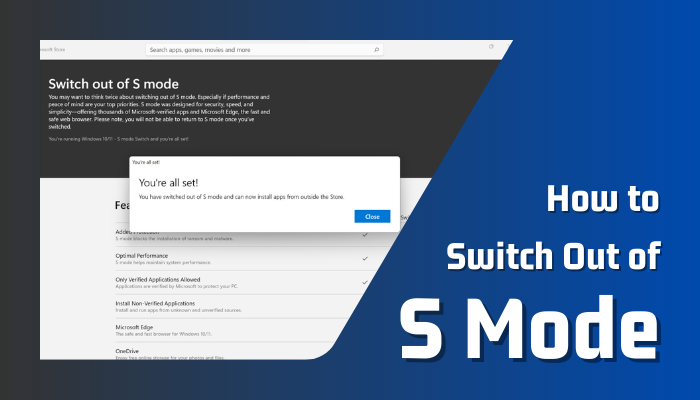
Thankfully, you can opt out of it very easily. Then your PC should run third-party apps just like any other Windows computer. This article will show you how to do that for both Windows 10 and 11.
So, let’s get started.
What is S Mode on Windows?
S Mode debuted with the release of Surface Go 3, running Windows 10. This is basically a full-fledged installation of Windows with some limitations baked in.
Windows S Mode can only run apps from the Microsoft Store. And you can only use Microsoft Edge as the browser and use Bing as the search engine.
Microsoft had two reasons to do this.
Firstly, they want you to use their own apps.
Considering that Edge had a major overhaul when they switched to the Chromium engine, it is not the worst browser to exist right now. But the app selection on MS Store is somewhat limited, so you have to work with that on S Mode.
Security and performance is the second reason. As third-party apps cannot run, your system remains safe from malicious apps. Microsoft blocks whenever you run any apps from outside its app store.
Most apps from Microsoft Store are light and consume fewer resources. Maybe that’s what prompted them to claim that S Mode makes your system snappy. After all, if you do not run any resource-intensive programs, your system should be fast, right?
Even with all advantages considered, I do not think S Mode is not for me. Considering my workflow, which includes Slack, the rest of my work is on Google Chrome and Outlook for email; it just doesn’t fit it. Without third-party app support, my PC would be just a Chromebook.
Your work may not be the same as mine, and maybe you could get by using the S mode. But if you ever think of switching to a regular Windows version, follow the steps detailed in the next section.
How to Switch Out of S Mode in Windows 10 and 11
You can simply open an app that Microsoft has designed to help you switch between Windows S Mode and regular Windows. Another method involves tweaking registry entries to achieve the same result.
Let’s look at both.
From Windows Settings
To switch out of S Mode on Windows, open Microsoft Store and search for the app that allows you to switch to a regular version of Windows. Alternatively, you can open this directly from inside Windows Settings. Both methods take you to the same app.
These methods will switch your Windows out of S Mode from Windows Settings:
- Press Win + I to open Settings.
- Click on Update and Recovery.
- Now click the Activation tab on the left.
- Click Go to Store under Switch to Windows 10 Pro.
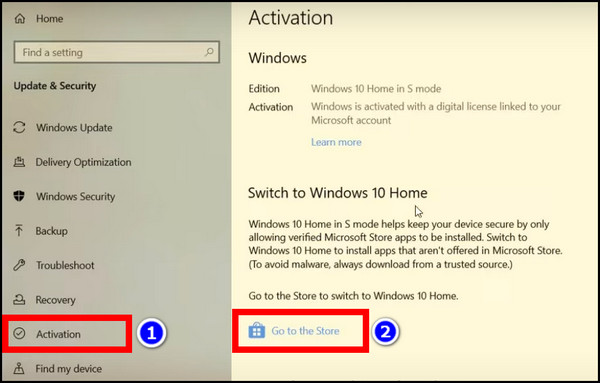 On Windows 11, you should see Open Store. Both should open up Microsoft Store and take you to the app that allows you to switch from S Mode.
On Windows 11, you should see Open Store. Both should open up Microsoft Store and take you to the app that allows you to switch from S Mode. 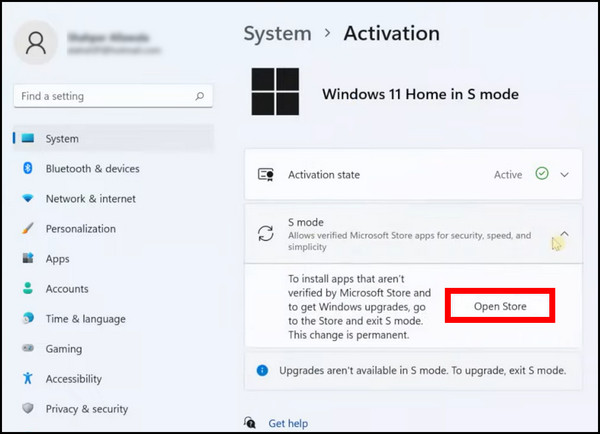
- Press the Get button under the Switch out of S Mode app’s page.
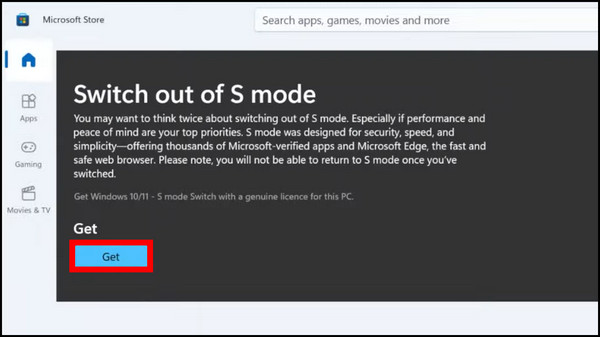
A notification should pop up, saying that you have successfully switched from Windows S Mode.
Using Registry Editor (Advanced)
In addition to apps not native to the app store, Microsoft even limits some useful Windows applications on the S Mode. Command Prompt and Registry Editor are a few I can name. What a bummer, indeed!
Since you cannot open the Registry editor from the desktop, you need to open it from Windows Recovery. From there, we can make the necessary changes, and this will remove the restrictions of the S Mode.
These steps will switch Windows S Mode using the Registry Editor:
- Open Windows Settings. Use Win + I Shortcut or click the gear icon from the Action Center.
For Windows 10:
- Click Update and Recovery.
- Press on Restart Now next to Advanced Startup.
For Windows 11:
- Click on System.
- Scroll down and click on Recovery.
- Click Restart Now under Advanced Startup.
Now the next steps are the same for both versions of Windows.
- Now navigate to Troubleshoot > Advanced options > Command Prompt.
- Type in Regedit and press the Enter key.

- Click on HKEY_LOCAL_MACHINE.
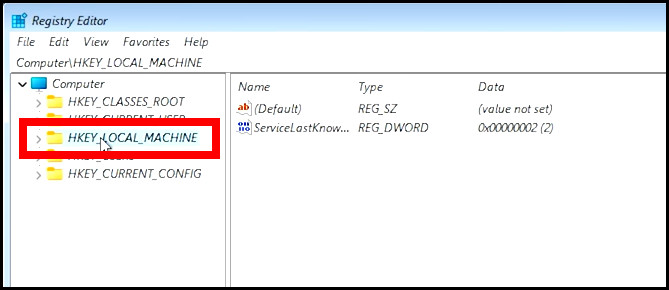
- Press File > Load Hive. This opens up a window. Here, you need to go to the drive and navigate to this location. On my PC Windows is installed on the C: drive, so this is where I went and clicked the Open button.
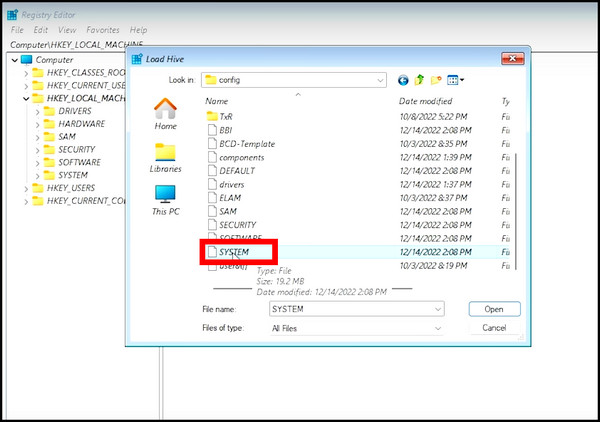
- Provide a name and press Ok. This opens up a new branch with the name that you entered.
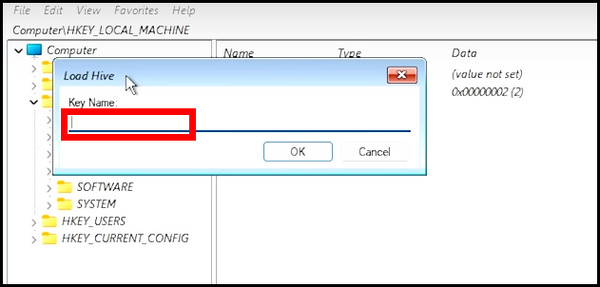
- Now double-click on the branch and navigate to ControlSet001/Control/CI/Policy.
- Double-click on SkuPolicy Required.
- Change the hexadecimal value to 0 and click Ok.
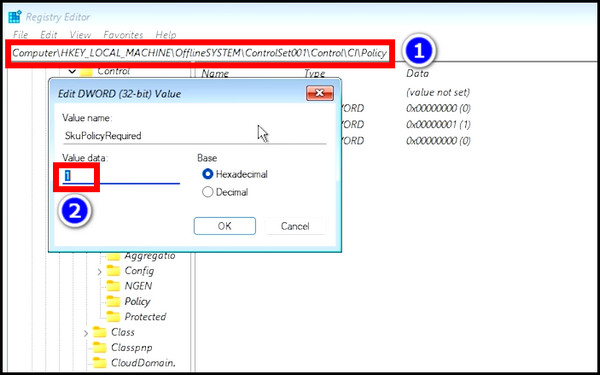
- Scroll down to the base of the branch that you created earlier and click on it.
- Click on File > Unload Hive > Ok to make sure the changes are saved.
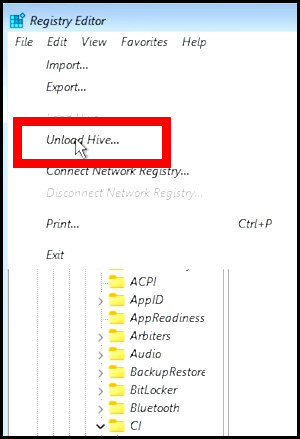
- Close the Registry Editor and all opened applications.
- Click Turn off PC.
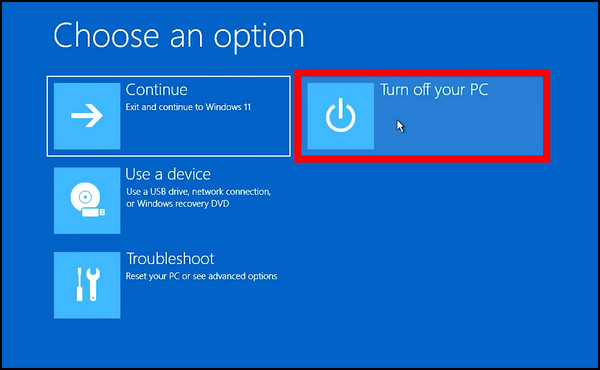
When you power on your system the next time, you should see that Windows is longer in S Mode. You can verify this by going to System > About. Under the Version, you should see Windows 10 or 11 with the Pro/Home edition listed.
Frequently Asked Questions
Is it Ok to switch out of S Mode?
Yes, it is totally okay to switch from S Mode. That way, you can run applications even outside of Microsoft Store.
Does switching out of S Mode slow down the PC?
No, the switch to the regular version of Windows will not slow down your PC. But if you run applications requiring more computing power than your PC, then your PC will slow down.
Final Words
We can at least thank Microsoft for making it very simple to opt out of Windows S Mode, even if it requires you to have a Microsoft account.
It took me literally 2 minutes to make this switch. If you do not have an internet connection or unwilling to sign in using your Microsoft account, you can also use the other method. It’s just that the process will take a bit longer.
That’s all for today.
And it’s time to say farewell.




